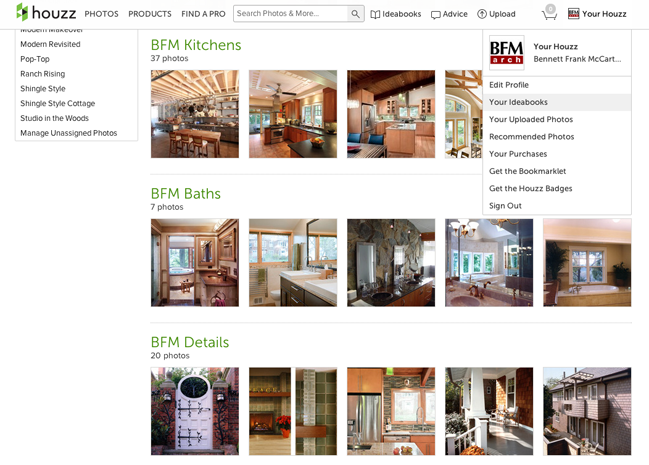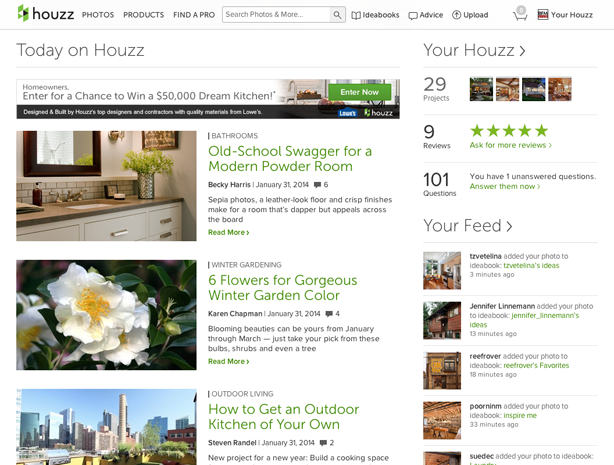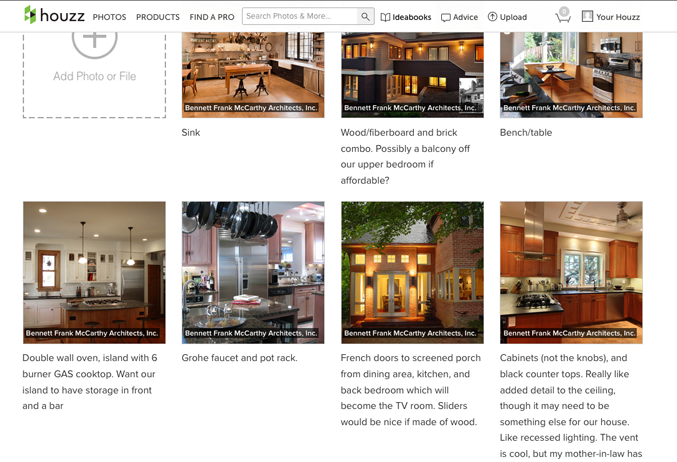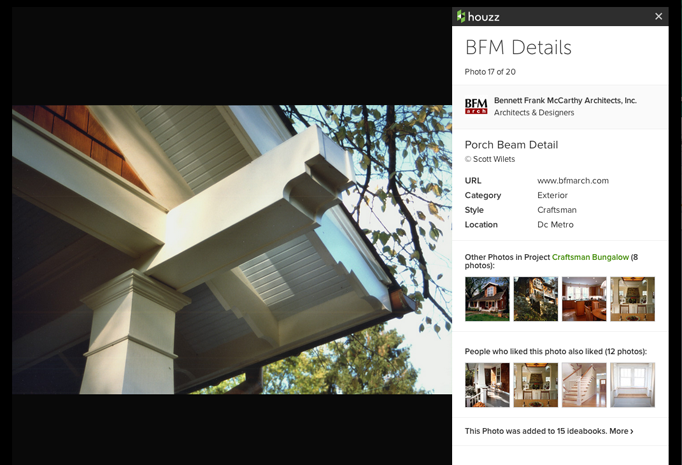Houzz-Hunting: A how-to guide to one of the most popular home design websites on the internet.
If you are looking to renovate or add to your home and you haven’t heard of houzz.com, you should check it out. Houzz is a website devoted to all things home design and renovation, from interiors to exteriors, fixtures, furnishings, and landscaping. If it has to do with the design of your home, you can find it on houzz.com. The general idea is that architects, designers, and builders from around the county display their work on houzz, creating a digital catalogue of images and ideas for anyone to peruse, all for free. You can search through these images by style, by room, or by designer. There are over 2.5 million images and the count grows daily. As you see images you like, you can then click on them and move them into idea books that you are able to save and share with others.
Houzz has many potential benefits for anyone looking to renovate their home. It can be a one-stop shop for ideas about every facet of your project. You can also use houzz to search for local design professionals, and even ask questions of the professionals associated with various images that you like. At Bennett Frank McCarthy, we love houzz. We have close to 200 images of our work displayed there (embed link to our houzz profile), and we regularly respond to questions from users about our projects.
a screenshot from the houzz.com homepage
A tool as useful as houzz.com can also come with some pitfalls if you aren’t thoughtful about how you use it. Here is a list of hints on how to make best use of the site as you plan for your renovation project. Happy houzz hunting!
Idea books
Make lots of idea books. They are easy to create and you can have as many as you want. Don’t limit yourself to just one – make one for kitchens and one for baths, one for exteriors and one for colors. Put your name in the idea book titles (this is VERY useful for your designer) so when you collaborate with others who have dozens of idea books, they know which ones are yours.

grouping your idea books by room type is a great way to organize a large collection of images
A picture isn’t always worth 1000 words
Caption your images, even if its just 2 or 3 words. This will help you remember why you liked the image (yes, after looking at hundreds of pictures, you can forget). Captions are incredibly helpful once you share your idea book with others, so they can immediately key in on the reason you liked a given image.
by captioning your images as shown in this screenshot from houzz.com, you help your designer understand why you chose those images for your idea book.
Leave your comfort zone
Take a few minutes and search for images in a style that you don’t normally gravitate towards. You’ll be surprised at what you might take away from a different style. The goal isn’t to convince yourself to do a modern bath instead of a traditional one, but you are more likely to see some things you haven’t before, which can inform decisions on your project. Also, sometimes it is just helpful to identify things you don’t like as it is to locate the things that you love. This can be helpful in refining your tastes and preferences, working out stylistic differences between you and your spouse, and conveying wishes to your architect.
The devil is in the details
As you search, look at images and projects at a variety of scales. It is great to use houzz for general character images (I like this type of roof line or that type of porch, etc). You can also use it to search for inspiration on little details like a porch railing, a shelf over a doorway or a tile backsplash. Getting inspired at a variety of scales will add richness to your completed project.
It is helpful to look for images and inspiration at a variety of scales
Money talks
We find that most of our clients who spend time perusing houzz quickly raise their aspirations for their renovation project. While this leads to a better result, it usually means a more expensive project. None of the images on houzz are indexed by price range, so they may include finishes and fixtures that are much more expensive than your architect or builder assumed when they gave you initial project cost estimates. If you start using houzz after you have talked budget with your architect, be sure to revisit the potential cost of the project as you start sharing idea books full of beautiful (and possibly expensive) images to see if your expectations should be adjusted.
Trust your designer
One downside to houzz is that it gives you access to almost too many ideas. While you should peruse houzz as a free spirit and click on anything you like, you should also understand that one project can only contain so many elements. Designing with an “a la carte” mentality can lead to a disjointed end-result, lacking a cohesive character or sense of space. It is important to understand how certain elements will feel in the space you have to work with, and how they will interact with other aspects of your design. This is where your architect or design professional comes in.
Your job is to find images of anything and everything that you like. Our job is to help you edit the search results, incorporate the ideas that make sense for your specific home, and to preserve a singular vision for the design. Too many ideas can easily overwhelm a project. Trust your designer’s instinct on which pieces are competing with one another, and then move in the direction that inspires you the most. Don’t be afraid to leave some good ideas behind for better ones.
– Shawn Buehler, Principal



